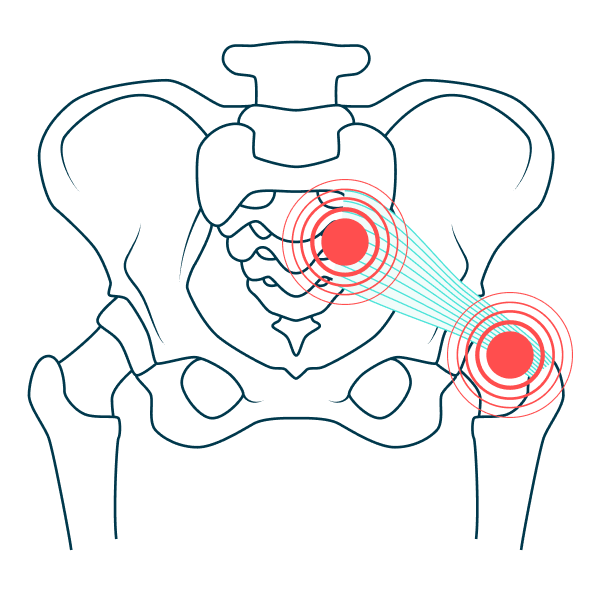Tendinitis and myofascial hip pain
What is
Tendonitis is the degeneration of the system that allows the muscles to insert into the bones (the tendon). Overuse of the muscles leads to continuous wear and tear leading to deterioration of this tendon. Usually the development of these injuries is slow and can lead to partial or total tendon rupture, so it is important to act as soon as possible on the factors that lead to this deterioration.
Myofascial syndrome is a pain condition caused by the involvement of a muscle or muscle group that is chronically and persistently contracted. This contracture is characterized by the existence of a tense band whose pressure produces pain in the area or in the path of the muscle. In it is possible to locate the so-called trigger points, which are spherical or tight band-shaped points whose pressure hurts and which can be released very effectively.

Type
Tendonitis and myofascial syndrome of gluteus medius
The gluteus medius is a muscle located between the gluteus maximus and gluteus minimus that allows us to open and close our legs, stabilizes the pelvis and helps us to maintain our balance. It is a fundamental muscle in transmitting weight and maintaining proper function between the spine and pelvis.
Symptoms
When we have a myofascial syndrome there is pain in the path of the muscle or in its insertion. Most often when we talk about the hip is that it is present in the gluteal region and depending on the area we will have some symptoms or others:
- Tendinitis and myofascial syndrome of gluteus medius: It manifests in the area and region where this muscle is located. The pain manifests as a twinge or contracture in the thickness of the muscle in the area below the pelvis, the lateral part of the thigh and the knee; it can be confused with hip bursitis. It increases when ascending, descending stairs and when lying on that area for a while.
- Pyramidal syndrome: pain is often manifested in the muscle area and may increase when sitting. It is very common for this process to be triggered in patients suffering from low back or hip pathology.

Our customers say
Insurance companies
Ask your MIVI centre for information on the agreements with insurance companies.










